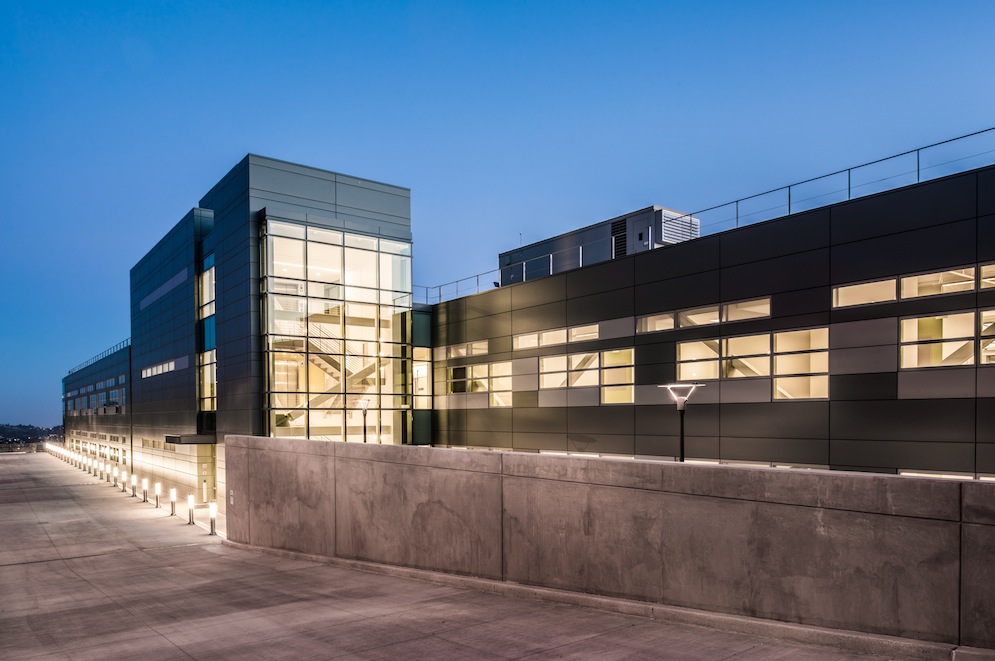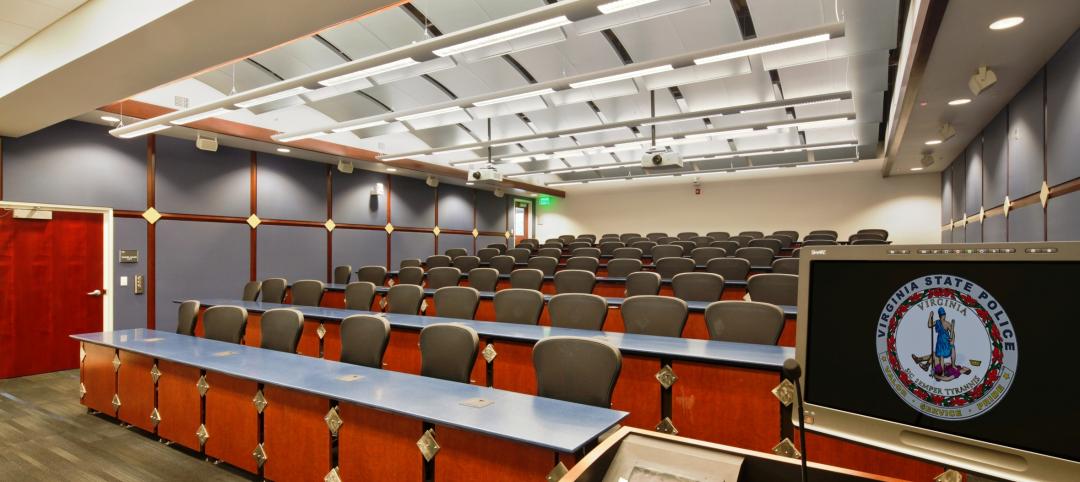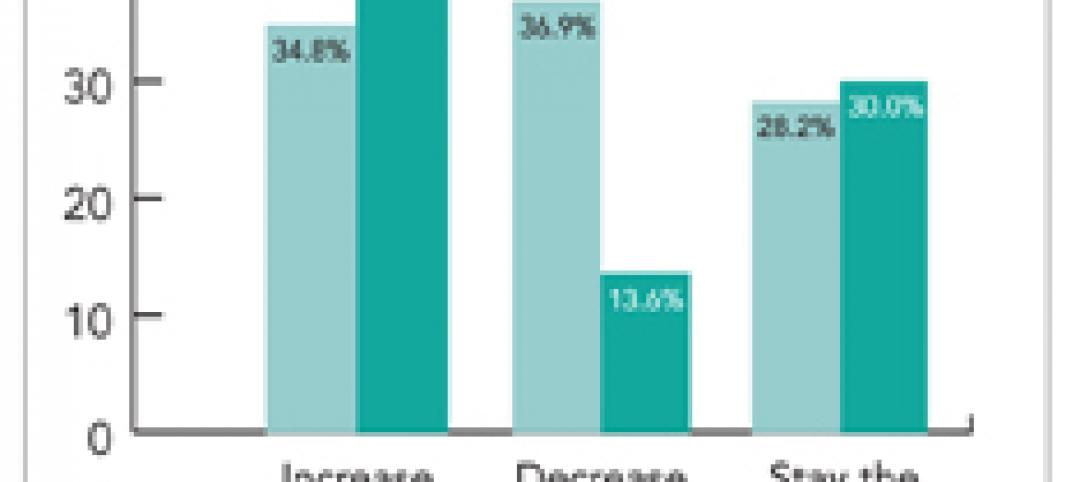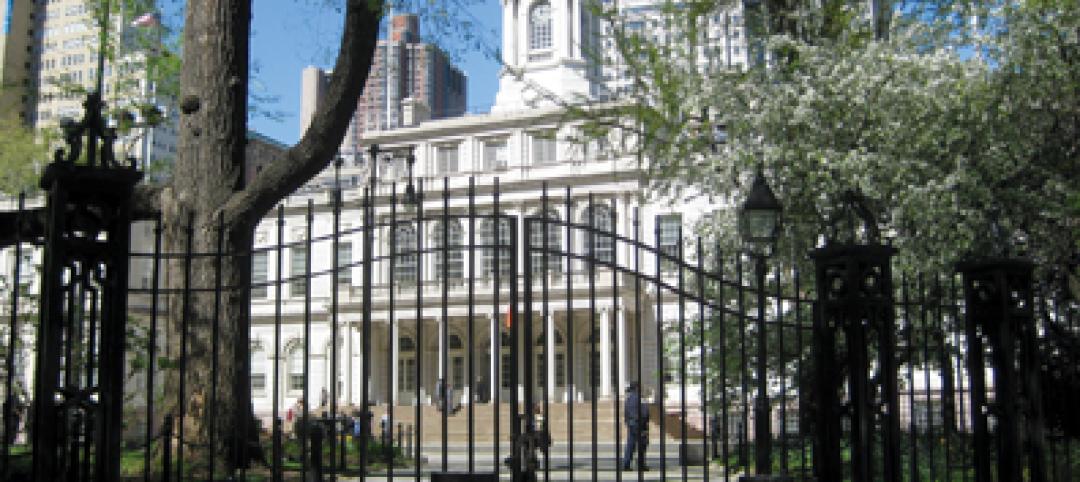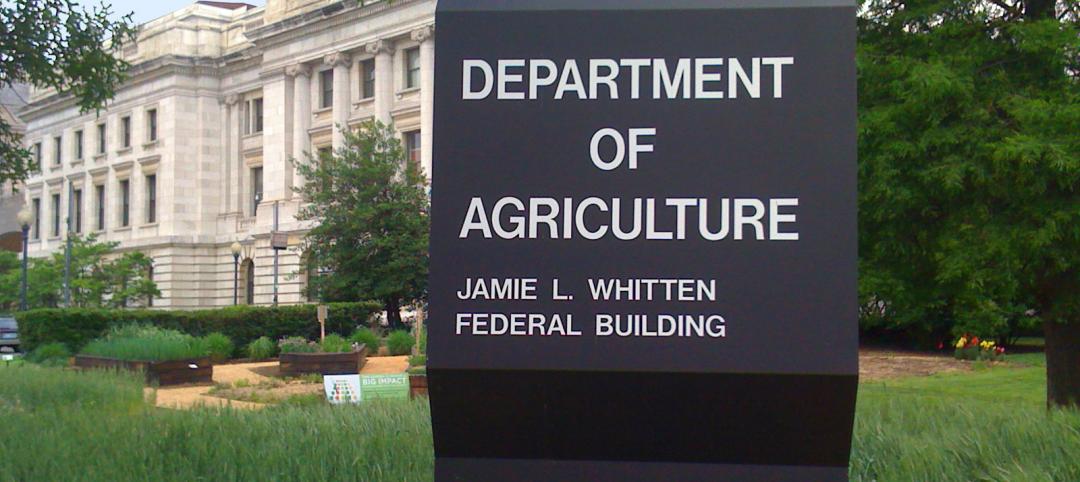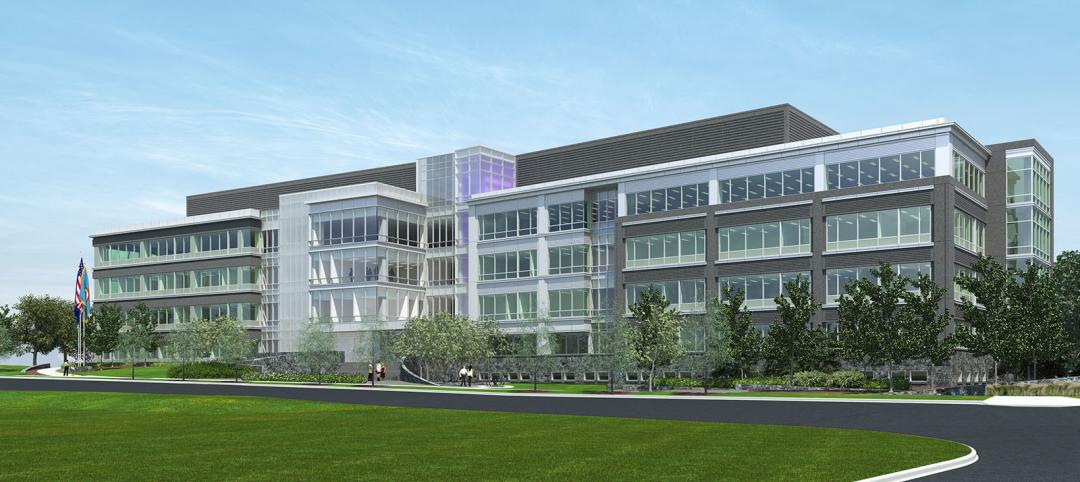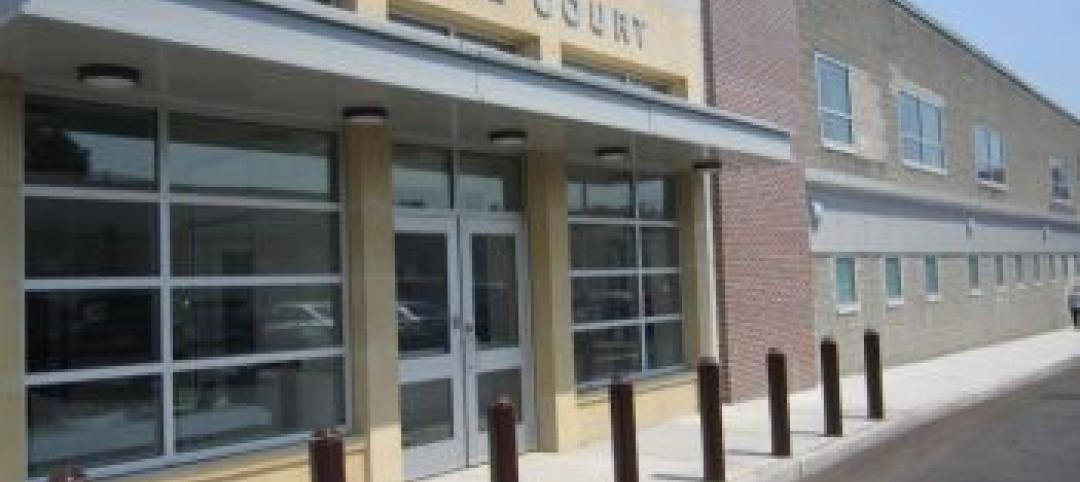Engineering firm Burns & McDonnell is converting a shuttered medical center in Independence, Mo., to a central utility plaza that will unite the city’s water, electric, and wastewater administrative and customer services under one roof. The city’s Department of Power & Light intends to use the building as a public education and outreach showcase for sustainable best practices.
Upon completion next September, the 45,000-sf renovated building will start reducing its annual energy costs by 55% with high-efficiency LED lighting and upgraded HVAC systems and controls. Water usage will be cut by 40%. A rooftop solar array and wind turbine are expected to generate 13% of the three-story building’s electricity needs, says Leon Daggett, the utility department’s director.
The $8.9 million project, which is pursuing LEED Platinum certification, will have six electric vehicle chargers. The renovation will retain 95% of the existing structure and divert 75% of C&D waste from landfill.
Government projects like this are no longer the exception, particularly at the federal level. For its recently completed $59 million Solar Energy Research Center at Lawrence Berkeley National Laboratory, the Department of Energy instructed its Building Team—led by SmithGroupJJR (architect and master planner) and McCarthy Building Companies (general contractor)—to create carbon-neutral sources of energy.
Known as Chu Hall, the 39,000-sf center’s renewable energy sources include solar hot water panels and PV arrays. Passive energy features include a heat-recovery system, high-efficiency condensing boilers and chillers with variable frequency drives, an evaporative pre-cooling hybrid system, and individual terminals that signal when a window on an office floor is open.
A recent military project led by design firm Leo A Daly—the 577,988-sf, $410 million Irwin Army Community Hospital Replacement Facility, at Fort Riley, Kan.—achieved LEED Silver certification. “Federal healthcare clients are interested in pursuing energy reductions from smart lifestyle cost-efficient decisions. They’re not interested in science projects,” quips Rich Onken, AIA, EDAC, Senior Project Manager. He says energy modeling has become invaluable for determining life cycle costs for federal projects.
Leo A Daly is finding that state government clients are also stepping up to the challenge, says Cindy McCleary, AIA, NCARB, LEED AP, Market Sector Leader–Regional Government for the firm’s Minneapolis office. She notes that projects for the state of Minnesota and the Minnesota State Colleges and Universities must now achieve 70% better than code-minimum energy use on new projects. The state’s goal: 100% carbon neutrality by 2030.
 Skidmore, Owings & Merrill and Rensselaer Polytechnic Institute co-developed an “active modular phytoremediation” system, which filters indoor air through a wall of hydroponic plants to detoxify the air. The system was installed at the Public Safety Answering Center II in the Bronx, N.Y. “This takes the concept of ferns in offices and multiplies it by 200,” says Nicholas Holt, AIA, LEED AP BD+C, a Director in SOM’s New York office. Image courtesy SOM.
Skidmore, Owings & Merrill and Rensselaer Polytechnic Institute co-developed an “active modular phytoremediation” system, which filters indoor air through a wall of hydroponic plants to detoxify the air. The system was installed at the Public Safety Answering Center II in the Bronx, N.Y. “This takes the concept of ferns in offices and multiplies it by 200,” says Nicholas Holt, AIA, LEED AP BD+C, a Director in SOM’s New York office. Image courtesy SOM.
Nicos Katsellis, RA, LEED AP BD+C, EDAC, GGP, Director of Operations for Leo A Daly’s Los Angeles office, says that, as energy-efficiency and sustainability standards keep ratcheting up, early collaboration among team members helps set priorities to develop holistic solutions.
Scott Lawson, Vice President for Clark Construction, in Los Angeles, couldn’t agree more. “Gathering the Building Team early is absolutely essential to understanding what the client wants and formulating a strategy,” he says. He points to the 545,000-sf Governor George Deukmejian Courthouse, in Long Beach, Calif., a LEED Gold building that opened in 2013. Lawson says that Johnson Controls, which will manage the building for 35 years, was willing to approve certain higher-cost products—like LED lighting instead of CFLs, and terrazzo flooring instead of carpeting—based on their long-term maintenance and sustainability.
The project’s unique performance-based infrastructure contract guarantees that the courthouse will be usable and functional for its intended purposes. Otherwise, the state, which owns the building but paid no upfront construction costs, will receive discounts on its annual payments to a consortium that includes Clark’s design-build subsidiary, AECOM, Johnson Controls, and the developer, Long Beach Judicial Partners.
NAVIGATING GOVERNMENT REGULATORY AND BUDGETARY CONSTRAINTS
Government work can also be a puzzle for AEC firms. Federal projects are subject to budgets and mandates that can work sometimes against sustainable design. Skidmore, Owings & Merrill recently completed the Air Force Academy’s Center for Character and Leadership Development. The building had been designed for LEED Platinum but was scaled back to LEED Silver because Congress at the time prohibited any Department of Defense construction to exceed that level, according to SOM’s Nicholas Holt, AIA, LEED AP BD+C.
A DOE project, the 139,800-sf Computational and Research Theory Facility at the University of California, Berkeley, is situated on a fault line, with its broadest elevation facing west—not exactly optimal for daylighting or solar power. Designer Perkins+Will addressed this problem by specifying a solar shading system that operates from noon to 3 p.m., says P+W Architect Kase Macosko. The building uses natural air to cool the data center’s supercomputers. Macosko says P+W and engineer Thornton Tomasetti focused on minimizing the amount of energy used to run the computers.
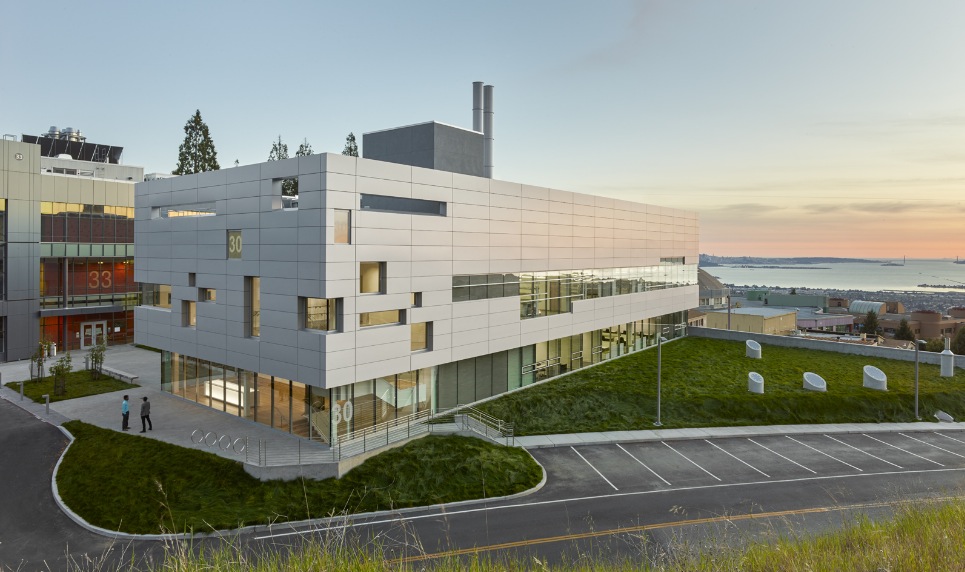 Solar Energy Research Center at Lawrence Berkeley National Laboratory. Image courtesy SmithGroupJJR.
Solar Energy Research Center at Lawrence Berkeley National Laboratory. Image courtesy SmithGroupJJR.
Related Stories
| Jan 30, 2013
RSMeans cost comparisons: parking structures, town halls, community centers
Construction market analysts from RSMeans offer construction costs per square foot for four building types across 25 metro markets.
| Jan 22, 2013
Virginia State Police Completes New Driver Training Complex
The Virginia State Police begins driver training at a new $27.4 million complex near Fort Pickett; construction of a new firing range is set to begin this spring.
| Dec 15, 2012
SAIC makes ready to lay off 700
SAIC, McLean, Va. (2011 construction revenues: $185,390,000), said it plans to cut its workforce by 700 employees in order to remain competitive in the federal market.
| Dec 9, 2012
AEC professionals cautiously optimistic about commercial construction in ’13
Most economists say the U.S. is slowly emerging from the Great Recession, a view that was confirmed to some extent by an exclusive survey of 498 BD+C subscribers whose views we sought on the commercial construction industry’s outlook on business prospects for 2013.
| Nov 11, 2012
Greenbuild 2012 Report: Government & Military
Public sector remains a bastion of sustainability
| Oct 12, 2012
Joint venture to manage construction of U.S. State Department's Foreign Affairs Security Training Center
The project will establish a center for training in a variety of security disciplines within the U.S. Department of State for the protection of diplomats and U.S. embassies abroad.
| Oct 4, 2012
2012 Reconstruction Awards Platinum Winner: City Hall, New York, N.Y.
New York's City Hall last received a major renovation nearly a century ago. Four years ago, a Building Team led by construction manager Hill International took on the monumental task of restoring City Hall for another couple of hundred years of active service.
| Sep 12, 2012
Harvesting new ways to eliminate waste at the USDA
After installing 20 high-speed, energy-efficient hand dryers in restrooms throughout the USDA headquarters; the USDA reports seeing an immediate 50% reduction in the use of paper towels.
| Sep 7, 2012
Manhattan Construction Co. to build Fairfax office building
Designed by Noritake Associates of Alexandria Virginia, the project is LEED-registered, seeking LEED Silver certification.
| Aug 9, 2012
DMR Architects converts bank building to municipal court
The project consisted of a $4 million renovation to a 2-story building totaling 13,000-sf.


